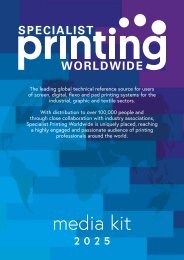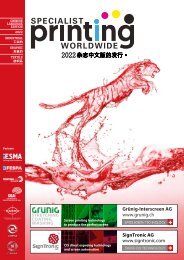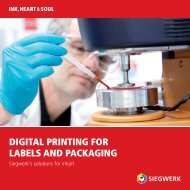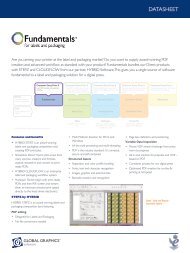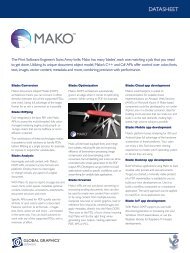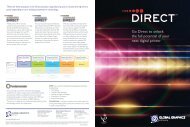Harlequin® Brochure
The Harlequin Host Renderer is a Raster Image Processor, or RIP. A RIP is a tool for converting a page description language such as PostScript or PDF into a format that a printing device such as an inkjet printhead, toner marking engine or laser platesetter can understand. The format that it outputs may be a raster file format such as TIFF, or it may be a stream of raster data that is delivered more or less directly to the printing device. The exact format delivered may be tuned for each integration.
The Harlequin Host Renderer is a Raster Image Processor, or RIP. A RIP is a tool for converting a page description language such as PostScript or PDF into a format that a printing device such as an inkjet printhead, toner marking engine or laser platesetter can understand. The format that it outputs may be a raster file format such as TIFF, or it may be a stream of raster data that is delivered more or less directly to the printing device. The exact format delivered may be tuned for each integration.
Create successful ePaper yourself
Turn your PDF publications into a flip-book with our unique Google optimized e-Paper software.
The Harlequin Host Renderer is a Raster Image Processor, or RIP. A RIP is a tool for converting a page<br />
description language such as PostScript or PDF into a format that a printing device such as an inkjet printhead,<br />
toner marking engine or laser platesetter can understand. The format that it outputs may be a raster file format such as<br />
TIFF, or it may be a stream of raster data that is delivered more or less directly to the printing device. The exact format<br />
delivered may be tuned for each integration.<br />
Accurate and reliable across a range of applications<br />
Harlequin Host Renderer is perfect for a wide range of<br />
print sectors, from complex coding and marking, through<br />
transactional, transpromo and direct mail, to general<br />
commercial print, publication, and books, to labels and<br />
packaging, to industrial and functional print (for example<br />
décor, textiles, ceramics, printed electronics and product<br />
decoration). It includes native interpretation of PostScript,<br />
EPS, DCS, XPS, JPEG, PNG, BMP and TIFF as well as PDF,<br />
PDF/X and PDF/VT, so whatever workflows your target<br />
market uses, it gives accurate and predictable image output<br />
time after time. Harlequin’s faithful implementation of PDF<br />
rendering means that it handles files from a wide range of<br />
creation workflows effortlessly, including Adobe ® Creative<br />
Cloud ® (Illustrator ® , InDesign ® , Photoshop ® ), Adobe<br />
Acrobat ® DC, Esko and HYBRID Software’s PACKZ.<br />
Harlequin Host Renderer is designed to be integrated<br />
by prepress and digital print OEMs into their prepress<br />
workflows or Digital Front Ends (DFEs).<br />
WHY HARLEQUIN?<br />
Your DFE will cost you less<br />
• The fastest RIP engine available, Harlequin requires<br />
less hardware<br />
• It’s available on Linux, as well as Windows, so you<br />
can reduce licensing costs<br />
• There are no excessive RAM requirements and no<br />
need for any special hardware<br />
Quick to market<br />
• The simple API makes it easy to integrate. Your new<br />
solution can be up and running within weeks<br />
Consistent, high-quality output<br />
• The Harlequin Host Renderer produces high-quality<br />
output time after time. It renders a wide variety of<br />
files correctly, including native PDF, PostScript ® , EPS,<br />
DCS, TIFF, JPEG, PNG, BMP, PDF/X, PDF/VT,<br />
all through one rendering engine for greater control<br />
and consistency<br />
Ideal for packaging and label presses<br />
• Special features including exporting technical and<br />
structural contours, support for PDF Processing<br />
Steps (ISO 19593-1), overriding overprint for white<br />
and varnish, brand color matching, and screening<br />
options for flexo, offset and digital production<br />
It’s scalable<br />
• With lots of configurations possible you can drive any<br />
number of digital presses<br />
Much more than just a renderer<br />
• Powerful production options are available to enhance<br />
your output quality such as Harlequin ColorPro<br />
color management, contour export screening options<br />
and font emulation<br />
Proven<br />
• Harlequin was first used in a production system in<br />
1988. Successive generations later it is now at the<br />
heart of digital presses from HP Indigo, HP<br />
PageWide, Roland, Durst, Canon and Memjet to<br />
name but a few.




